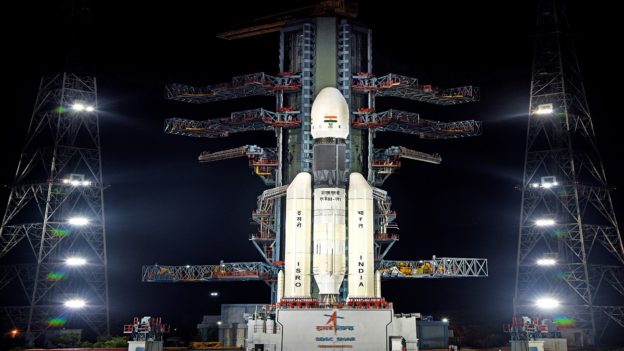Technology for MSMEs: The company so far has contributed its systems and subsystems to 88 satellites and 68 launch vehicles for the Indian space programme. These included the mighty ones as well – Chandrayaan-I and II, Mangalyaan, the upcoming Chandrayaan-III, and the first human space mission of India — Gaganyaan.
Technology for MSMEs: Hyderabad-based Subba Rao Pavuluri had started looking at the space sector as the ultimate frontier for entrepreneurship, right after his graduation back in 1978. He joined Indian Space Research Organisation (ISRO) in the same year. Pavuluri worked for over 14 years before realising the opportunity for private sector participation in India’s vast space sector, much before 2020 when the government opened up the sector for private firms.
In 1992, Pavuluri left ISRO to set up one of India’s first private sector enterprises in the space sector Ananth Technologies to manufacture satellite systems and subsystems for ISRO. Pavuluri came up with the idea of manufacturing mission computers, control systems, sensors, communication systems, etc., during India’s launch of the first of a series of remote sensing satellites in 1988. Remote sensing, which essentially means scanning the earth surface via satellites or aircraft to record data related to weather, drought, rainfall, agriculture, forestry, and more, emerged as a sunrise sector in the 1990s that Pavuluri tapped into to begin with.
At ISRO, seminars were conducted on how remote sensing data could be made use of under the programme called Indian Remote Sensing (IRS) Utilisation programme. During that period, I found that there was this huge opportunity in applying remote sensing data to various developmental sectors in our widely expansive country. I realised that government agencies would not be able to take up the entire exercise alone and there was an opportunity for the private sector to get involved in the commercialisation of space-related activities. India needed a lot of remote sensing or satellite data to solve challenges related to water, urban development, disasters like floods, cycles, etc.,” Pavuluri told Financial Express Online.
To launch a large number of remote sensing satellites, India needed multiple satellite launch vehicles as well. The market was much bigger than what Pavuluri had initially thought. “So, I resigned from ISRO and started the company to manufacture systems and subsystems for remote sensing satellites in the beginning and then quickly expanded to launch vehicles as well. This was the time when there was no liberalisation or reforms in the space sector or communications sector.”
However, starting up didn’t come easy for Pavuluri. Getting financial support from banks was difficult to build a space company due to negligible awareness and understanding of the nascent market among lenders. Pavuluri, at one time, had to even mortgage his assets including his house and land in his village land to secure a bank loan. These were still early days for him.
“The biggest challenge was to leave the cosy job and start up at the age of 44. Since I was into a very capital-intensive business, I had to give my small house and one acre of land in my village as collateral back in around 1995. My wife also supported me with her savings. I had to bet everything I had on the business,” said Pavuluri.
The high-risk bet has paid off well. Ananth Technologies so far has contributed its systems to 88 satellites and 68 launch vehicles for the Indian space programme. These included the mighty ones as well – Chandrayaan-I and II and Mangalyaan. The company has also been part of Chandrayaan-III, which is likely to be launched in August this year and the upcoming first human space mission of India — Gaganyaan.
Ananth Technologies has manufacturing facilities in Hyderabad, Bengaluru, and Thiruvananthapuram and is reportedly the first private enterprise to set up assembly, integration and testing facilities for satellite and launch vehicles.
“In the space sector, one part is research and development (R&D) and another is related to commercial activities. The government had mandated ISRO for R&D so that the private sector can work on commercial activities. Earlier the taxpayers’ money was used for building satellites but today, private initiatives can take that up,” said Pavuluri.
In June 2020, the government set up the Indian National Space Promotion and Authorization Centre (IN-SPACe) under the Department of Space to ensure greater participation of private companies. Last year, Prime Minister Narendra Modi had also launched the Indian Space Association (ISpA) to engage with industry stakeholders for the formulation of a policy framework that aims at growing the Indian space sector through global linkages.
According to the Economic Survey of 2022, in a little over a year since IN-SPACe was announced, the interim IN-SPACe board had received close to 40 proposals from large industries, MSMEs, startups and academia for manufacturing launch vehicles, satellites, earth observation applications, communications, etc. Moreover, in the last three years, the number of space startups increased from 11 in 2019 to 47 in 2021.
“It is easier for someone to start today with the ecosystem that has been created and the scale in the space industry with the reforms that have been introduced,” said Pavuluri. Ananth Technologies is now looking at becoming a satellite operator that enables satellite transmission capacity and builds a satellite bandwidth network. The company had set up a full-scale satellite manufacturing facility in Bengaluru in 2020 where four large satellites can be made and assembled simultaneously. “The next level from here is to own the satellite itself.”
https://www.financialexpress.com/industry/sme/msme-tech-how-this-space-entrepreneur-went-from-mortgaging-house-land-to-making-parts-for-chandrayaan-mangalyaan/2428355/?utm_source=newzmate&utm_medium=email&utm_campaign=femain&pnespid=Hbss90pI7jcIhkSR9oHeT1lPoxk2m7dluwFcFK1TMc3KNXC64Fr209uOaPrPixPOj9QKqeww





